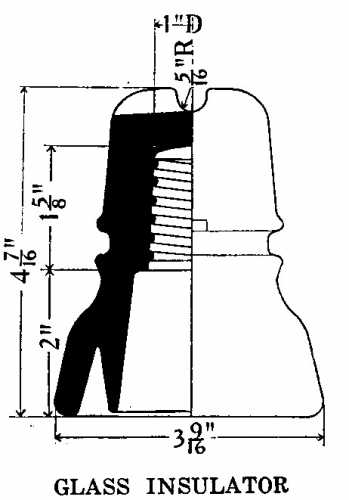
Here is the answer in part to the question about the purpose of the cross-top grooves on some insulators. It was found in the July 14, 1914 issue of Electrical World. Yes, tieing the conductor in the top groove provided better support, but one of the primary advantages described by Fred Locke nearly 20 years earlier for his U-923 was to allow alignment of the conductor groove with only a 1/4 turn adjustment rather than a 1/2 turn with other cable-top styles. The 1/4 turn resulted in a tighter fit on the pin. From Electrical World, July 14, 1914: "The glass insulator shown in the accompanying illustration, which is being placed on the market by the Brookfield Glass Company, 2 Rector Street, New York, was first designed for the Pacific States Telephone & Telegraph Company's mountain lines. Two right-angled grooves are provided on the top of the insulator. In the groove parallel to the line the line wire is placed. A fastening wire is passed over this wire in the other groove and is tied around the insulator in the groove provided below. "This insulator by reason of its design is especially well adapted for use on lines which are installed in hilly districts of the country." |